It is fifty years since Richmal Crompton died at the age of 78 in 1969. Her original idea was to write stories of children for adults, but they ended up becoming favourites of the children instead, and still are today.
Over 12 million copies of her books were sold in the UK, at the time only the Bible outsold this author. Her books were translated in to 17 languages.
Richmal Crompton wrote 39 ‘William’ books and the final one was published posthumously.
My first ‘William’ book was given to me as a present for Christmas when I was about nine or ten.
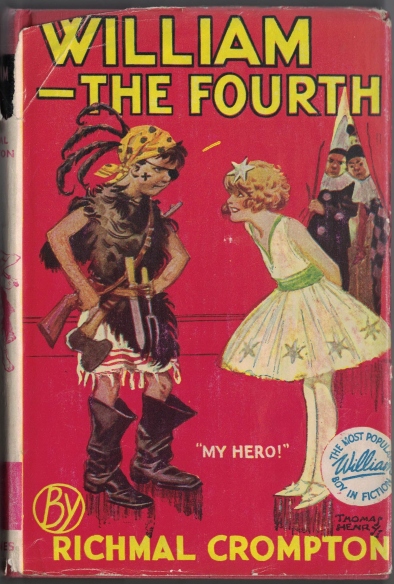
Published 1924 – the 4th book in the series
Entertainment for children was not electronic (unless you had an electric train set), because children were expected to read and amuse themselves, unless they could persuade an adult to play snakes and ladders or some other boardgame. At least I managed to learn how to play Cribbage, because it was one of Dad’s favourite card games.
‘William’ our hero, was eleven when I first met him in the pages of William-The Fourth. He never grew a day older during all our time together. Each chapter of the book was a new adventure for William and his friends, known as the ‘Outlaws’.
William and his friends came from affluent families, I suppose one would say ‘upper middle class’, because the house in which he lived was detached, with a large garden and Mr Brown (William’s father) caught the train each day to go to ‘town’ i.e London. Mr Brown must have had a good job because the family employed a cook, a maid and part-time gardener.
His home couldn’t have further from my own home, which was a terraced house, without a bathroom, but with an outside toilet. Yet the idea of living in a home that was William’s, just fired one’s imagination.

The house where I lived when I discovered the William books, was something like the photograph above – the whole neighbourhood was demolished in 1970, and redeveloped.
The cost of a new William book in the mid 1950’s was 7/6d (seven shillings and six pence), so with 6d (six pence) a week pocket money it would take me fifteen weeks to save enough for a new ‘William’ book. In today’s money the equivalent is £7.26 (about £7- 5- 3d in old money or AUD $12.88)
One might ask why I didn’t use a library. The problem with this idea was that the nearest library to where I lived was at least two bus rides away and the cost would have been more than 6d.
I suppose that I could have walked, but the distance would have taken me about an hour and a half each way, and I couldn’t be sure that the William books would not all be out on loan – we didn’t have a phone so that I could check.

Published 1926 – the 6th book in the series
At least my relatives (aunts & uncles) knew what they could buy me, or contribute 2/- towards for a birthday present, which shortened the required number of weeks after Christmas, because my birthday is in April.

Published 1932 – the 14th book in the series

Published in 1933 – the 15th book in the series.

Published in 1931 – the 13th in the series
Every chapter in each book is a standalone story, and all the main characters are the same, so the reader doesn’t have a problem when buying a book that it might be out of sync with the overall image of William.
Several films have been made from the books – the first being in 1940.
The BBC turned the stories in to a radio show in 1946 on the ‘Light’ program, which played weekly for two years.
A stage play of one of the stories was created in 1947 and the play toured the UK.
In the mid 50’s, as TV became popular in the UK, a series of thirteen episodes were broadcast.
In the early 1960’s a new series of William stories were broadcast on TV with Dennis Waterman playing the part of William.
For Dennis Waterman – think ‘Minder’ & ‘New Tricks’.
From the ‘William’ books I moved to Billy Bunter . . .

As much as I enjoyed Billy Bunter it didn’t have the same ‘flair’ as the William books.

Tom Sawyer was in the mold of William.

Gulliver’s Travels – very different.
Without wishing to be judgemental, but I wonder if today’s nine, ten or twelve year old children receive the same pleasure from their Ipad as I did from being transported through books to being a member of William’s gang ‘The Outlaws’, or as a pupil at Greyfriars school with Billy Bunter, perhaps chasing after Becky with Tom Sawyer, and not to mention the ‘little people’ of Lilliput – Gulliver’s Travels was a 1953 Christmas gift from my cousin – I still have the book, but have lost the dust jacket.
Overall meeting William, Billy, Tom and experiencing Gulliver’s experiences in my opinion wins hands down.
When we emigrated in 1980 all my old friends had to come with me . . . . .
At the beginning of this blog I mentioned that this year is the 50th anniversary of Richmal Crompton’s death – it is also the centenary of the first publication about the boy called William.
Richmal Crompton had her first story published, featuring William, which was called “Rice Mould Pudding”, and was published in Home Magazine in 1919. It wasn’t until 1922 that the first book of William stories appeared.
I’ve read comments that J.K Rowland is the Richmel Crompton of today, perhaps they are correct.

The above is the first of the William books to be published in 1922, note the cost, by the 1950’s it was 7/6d. I’ve read this book, but never owned it.



 HMS Karanja in 1942 – after she’d been bombed, and is now on fire, and I can only assume that Dad was helping to fight the fires – she sank later.
HMS Karanja in 1942 – after she’d been bombed, and is now on fire, and I can only assume that Dad was helping to fight the fires – she sank later.
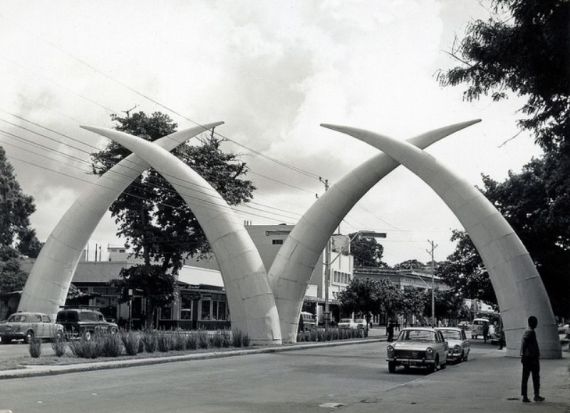 At the top of Kilindini Road were the famous ‘tusks’.
At the top of Kilindini Road were the famous ‘tusks’.
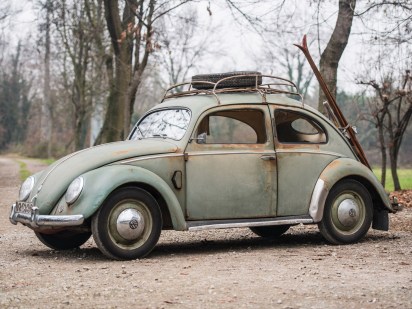




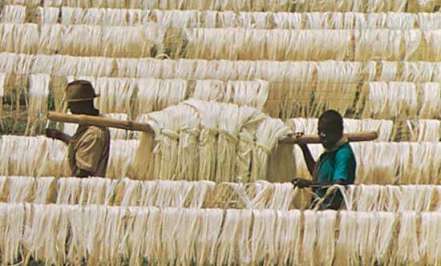






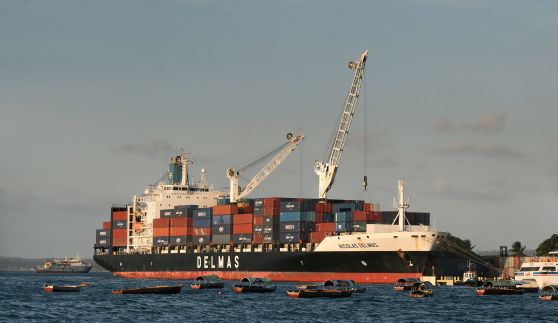

 Shigeru Mizuki is a Japanese Manga author who was born in 1922 and lived in Sakaminato.
Shigeru Mizuki is a Japanese Manga author who was born in 1922 and lived in Sakaminato. Shigeru Mizuki
Shigeru Mizuki Father and son in 1942
Father and son in 1942 The artist creates his own pictures and tells the story around the pictures – he changes the pictures as the story progresses. The above is NOT Shigeru Mizuki
The artist creates his own pictures and tells the story around the pictures – he changes the pictures as the story progresses. The above is NOT Shigeru Mizuki He published other works which always focused on peace, and the characters that he created only came out during peace time.
He published other works which always focused on peace, and the characters that he created only came out during peace time. He also produced a Manga biography of Adolf Hitler. I don’t think the Nazi party would have been pleased.
He also produced a Manga biography of Adolf Hitler. I don’t think the Nazi party would have been pleased. also buildings surrounding the train station had characters.
also buildings surrounding the train station had characters. When our guide spoke of the characters I had the feeling that she considered them to be real – she was so passionate about them and the stories in which they took part. We were regaled with some of the stories and the background of the characters.
When our guide spoke of the characters I had the feeling that she considered them to be real – she was so passionate about them and the stories in which they took part. We were regaled with some of the stories and the background of the characters. Even the street lighting in a small park that we passed had a ‘manga’ eyes.
Even the street lighting in a small park that we passed had a ‘manga’ eyes. The side of a toilet block was pressed in to service.
The side of a toilet block was pressed in to service.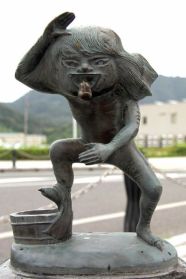 Just some of the characters along the ‘memorial’ street, but I don’t know their names.
Just some of the characters along the ‘memorial’ street, but I don’t know their names.
 Children’s comics ?
Children’s comics ? The light rail from Port Melbourne to the city takes about fifteen minutes, and costs $7.50 return, if you are a pensioner or $15.00 full fare.
The light rail from Port Melbourne to the city takes about fifteen minutes, and costs $7.50 return, if you are a pensioner or $15.00 full fare. Sunrise over Melbourne as we crept alongside the wharf.
Sunrise over Melbourne as we crept alongside the wharf. The market is a hundred and forty years old (opened in 1878), and is open five days a week – Thursday to Sunday and Tuesday.
The market is a hundred and forty years old (opened in 1878), and is open five days a week – Thursday to Sunday and Tuesday. This was an interesting stall – all the individual flowers are made from recycled wood!
This was an interesting stall – all the individual flowers are made from recycled wood!

 I don’t know how many I touched, just to satisfy my curiosity and to make sure that the flowers were not real!
I don’t know how many I touched, just to satisfy my curiosity and to make sure that the flowers were not real! $5 ‘T’ shirts – I didn’t buy any, but the display was colourful.
$5 ‘T’ shirts – I didn’t buy any, but the display was colourful. Supposedly Australian roads signs, but as I don’t have a bar or ‘den’ I didn’t buy any.
Supposedly Australian roads signs, but as I don’t have a bar or ‘den’ I didn’t buy any. Because our destination was Tasmania I considered buying the Tasmanian Devil sign, but where to hang it at home – all too hard, so didn’t buy anything. I’m a great shopper.
Because our destination was Tasmania I considered buying the Tasmanian Devil sign, but where to hang it at home – all too hard, so didn’t buy anything. I’m a great shopper. Boomerangs – I think they were made in China. . . not sure if they were supposed to work (which I doubt), or if they are just for collecting dust in forgotten drawers at home.
Boomerangs – I think they were made in China. . . not sure if they were supposed to work (which I doubt), or if they are just for collecting dust in forgotten drawers at home.

 Glitter and more glitter, reminded me of various stalls that I ‘d seen in Asia & India.
Glitter and more glitter, reminded me of various stalls that I ‘d seen in Asia & India. This stall had the feel of Japanese cartoon characters – another stall offered Japanese crockery – mainly every day crockery. When I was at sea we used to call in to Nagoya (east coast of Japan), to pick up a cargo of everyday crockery, as well as expensively created porcelain.
This stall had the feel of Japanese cartoon characters – another stall offered Japanese crockery – mainly every day crockery. When I was at sea we used to call in to Nagoya (east coast of Japan), to pick up a cargo of everyday crockery, as well as expensively created porcelain. The above is a sample of Noritake porcelain of Nagoya, from the 1920’s.
The above is a sample of Noritake porcelain of Nagoya, from the 1920’s. Check the hanging item at the centre right of the above picture. Melbourne seems to be big into recycling packing cases or wooden pallets.
Check the hanging item at the centre right of the above picture. Melbourne seems to be big into recycling packing cases or wooden pallets. A close-up of the sculpture . . . unusual, but not to my taste.
A close-up of the sculpture . . . unusual, but not to my taste. Walking down the alley we came to the organic market, which is more my taste.
Walking down the alley we came to the organic market, which is more my taste. I do like chillies – and I was pleased that I’d found something that was ‘made in Australia’ !
I do like chillies – and I was pleased that I’d found something that was ‘made in Australia’ !
 Say cheese!
Say cheese! Stuff this stuff that . . .!
Stuff this stuff that . . .!
 The indoor area of the market, was mainly for the sale of fresh food – wine, fish, meat, bread, everything that you could possibly want, such a shame that this market it is about a thousand kilometres from where Maureen & I live. The colours and the smell of the fresh fruit was a ‘feast’ to the senses.
The indoor area of the market, was mainly for the sale of fresh food – wine, fish, meat, bread, everything that you could possibly want, such a shame that this market it is about a thousand kilometres from where Maureen & I live. The colours and the smell of the fresh fruit was a ‘feast’ to the senses. Nectarines & peaches.
Nectarines & peaches.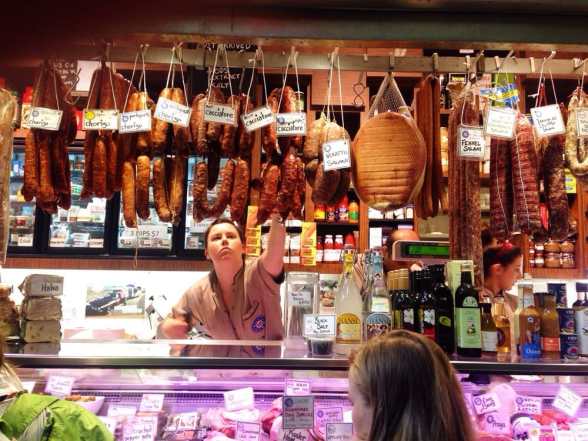 Smoked meat, cold cooked meat, olive oils and more.
Smoked meat, cold cooked meat, olive oils and more.

 For the newer followers I’ve written one book, but it has been published twice. The above two books are the same story – I wrote
For the newer followers I’ve written one book, but it has been published twice. The above two books are the same story – I wrote  I had to buy it, for further background research for my sequel. I’m half way through reading The Fishing Fleet and have forgotten that I should read it for research, because it is such an interesting and entertaining book.
I had to buy it, for further background research for my sequel. I’m half way through reading The Fishing Fleet and have forgotten that I should read it for research, because it is such an interesting and entertaining book. Orchard Road Singapore – nothing but shops & more shops.
Orchard Road Singapore – nothing but shops & more shops. A beautiful peaceful park area, which concentrates on orchids.
A beautiful peaceful park area, which concentrates on orchids. My knowledge of gardening and plants is very limited, so I’ll just post the pictures . . .
My knowledge of gardening and plants is very limited, so I’ll just post the pictures . . . Getting to the Botanical Gardens from the city is very easy, because the gardens are on the metro system. You don’t have to take a taxi.
Getting to the Botanical Gardens from the city is very easy, because the gardens are on the metro system. You don’t have to take a taxi. I couldn’t stop clicking the camera the colours of the plants are fabulous.
I couldn’t stop clicking the camera the colours of the plants are fabulous.
 Bandstand Hill
Bandstand Hill

 Many of the plants in the celebrity area have links to world famous people –
Many of the plants in the celebrity area have links to world famous people – Peace and quiet where ever you go . . .
Peace and quiet where ever you go . . .
 The occasional problem if you are an insect.
The occasional problem if you are an insect.
 This is how I remember Singapore River in the mid 60’s.
This is how I remember Singapore River in the mid 60’s. As it is today
As it is today The river at night today.
The river at night today.

 Joseph Conrad
Joseph Conrad

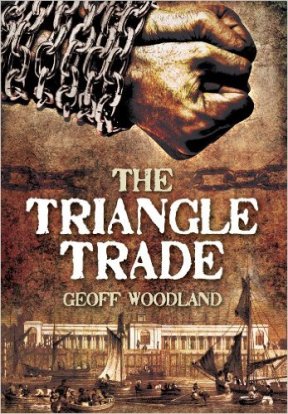

 He was posted to the China station and using his initiative he shelled Nanking, because it was in rebellion. For this action he was awarded the Order of the Royal Crown. (Third class).
He was posted to the China station and using his initiative he shelled Nanking, because it was in rebellion. For this action he was awarded the Order of the Royal Crown. (Third class). On the brink of WW1 the Emden was anchored at Tsingtao, which was a German naval base in China. I sailed in to Tsingtao in 1963, and it was still a naval base then, but this time for the Chinese.
On the brink of WW1 the Emden was anchored at Tsingtao, which was a German naval base in China. I sailed in to Tsingtao in 1963, and it was still a naval base then, but this time for the Chinese. Admiral Graf Spee
Admiral Graf Spee  Within thirty minutes the oil tanks were ablaze and causing explosion that damaged vessels in the harbor. SMS Emden sailed before the harbour defense guns could train on the raider.
Within thirty minutes the oil tanks were ablaze and causing explosion that damaged vessels in the harbor. SMS Emden sailed before the harbour defense guns could train on the raider. HMS Yarmouth – note the number of funnels.
HMS Yarmouth – note the number of funnels. SMS Emden photo taken in 1911 in Tsingtao.
SMS Emden photo taken in 1911 in Tsingtao.

 A German postcard of the battle.
A German postcard of the battle.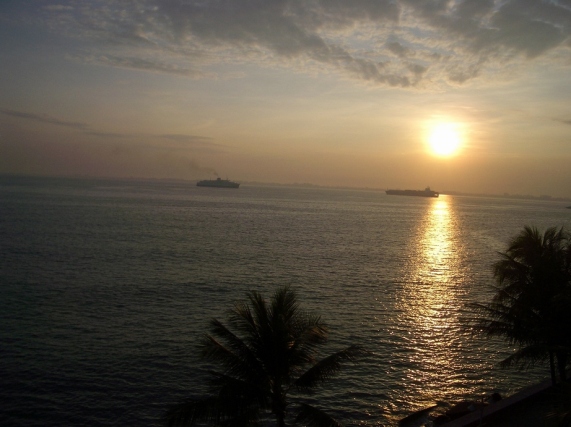



 HMAS Sydney
HMAS Sydney The Imperial ensign still flew over the beached ship, she had not formally surrendered. Captain Glossop of the Sydney signaled a number different ways, including plain language because he knew that the Emden’s code books had been thrown overboard, to try and see if the Emden was ready to surrender. The Sydney fired again and hit the stricken ship before the ensign was pulled down and white sheets hung over the side. The Germans burnt their ensign rather than allowing it to fall in to the hands of the enemy.
The Imperial ensign still flew over the beached ship, she had not formally surrendered. Captain Glossop of the Sydney signaled a number different ways, including plain language because he knew that the Emden’s code books had been thrown overboard, to try and see if the Emden was ready to surrender. The Sydney fired again and hit the stricken ship before the ensign was pulled down and white sheets hung over the side. The Germans burnt their ensign rather than allowing it to fall in to the hands of the enemy. This was awarded to particular people for excellent service in the military. The military version of the award was stopped in 1918, but the civilian award is still in use – similar to the British OBE
This was awarded to particular people for excellent service in the military. The military version of the award was stopped in 1918, but the civilian award is still in use – similar to the British OBE One of the Emden’s guns can be seen in Hyde Park in Sydney
One of the Emden’s guns can be seen in Hyde Park in Sydney

 Little Orme – picture taken from the Great Orme.
Little Orme – picture taken from the Great Orme.



 Everyone seemed to know Turpin’s name even the people who didn’t have any interest in boxing.
Everyone seemed to know Turpin’s name even the people who didn’t have any interest in boxing.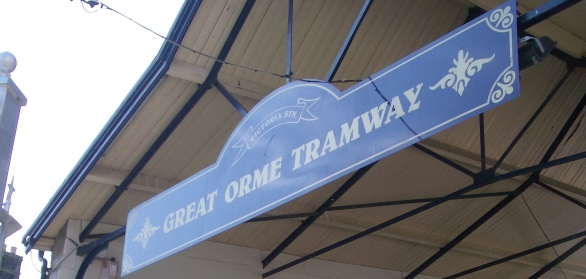





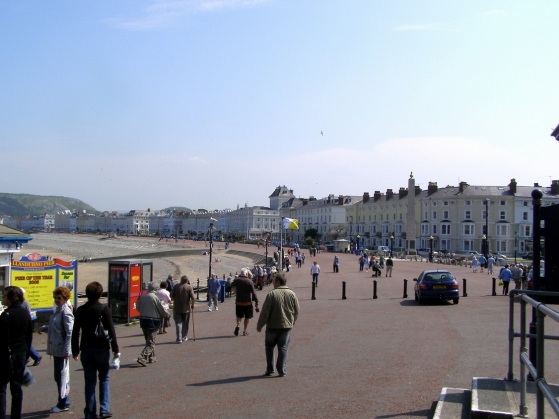

 Llandudno pier is at the bottom of the picture.
Llandudno pier is at the bottom of the picture.
 Entrance to the pier.
Entrance to the pier.


 his parents were Welsh, although he was born in London. He was seven when his mother died and he was sent to live with his Aunt in Llandudno until he was 14, after which he moved back to London. He emigrated to Austraia in 1884 at the age of twenty two.
his parents were Welsh, although he was born in London. He was seven when his mother died and he was sent to live with his Aunt in Llandudno until he was 14, after which he moved back to London. He emigrated to Austraia in 1884 at the age of twenty two.
 Alice Liddell.
Alice Liddell.


 The cover that we all know from the Disney studios.
The cover that we all know from the Disney studios.
 I was safe in using St Nicholas Church – the sailors’ church because it was used as a guide by sailors to bring their ship in to port in 1804. It had been a place of worship since 1257, so I felt safe if I had to refer to the church building. The above photograph taken a few years ago.
I was safe in using St Nicholas Church – the sailors’ church because it was used as a guide by sailors to bring their ship in to port in 1804. It had been a place of worship since 1257, so I felt safe if I had to refer to the church building. The above photograph taken a few years ago.



 Chart of the Mersey Bar area dated 1801; produced by
Chart of the Mersey Bar area dated 1801; produced by 






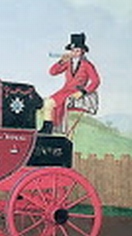
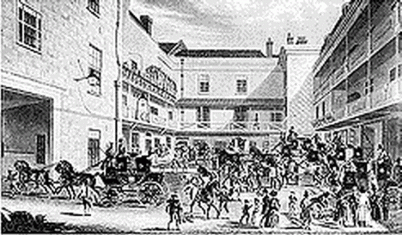






 Picture from the Maritime Museum web site.
Picture from the Maritime Museum web site. Dennis Adams painting (1983) illustrates AE1 at sea.
Dennis Adams painting (1983) illustrates AE1 at sea.




